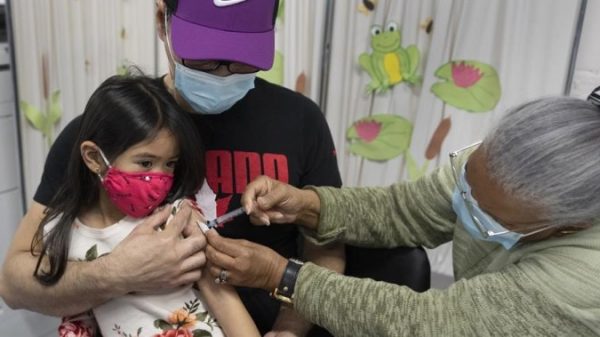
Eating disorder specialists in Colorado said they have seen an increase in new patients seeking treatment.
DENVER — During the pandemic, the need for mental health resources increased as millions of people faced different levels of uncertainty, children included.
Eating disorder specialists in Colorado said they began noticing an increase in calls for help and treatment early in the pandemic.
“It has been a steady stream of pretty high volume, much more than we’ve seen in previous years and really devastating,” said Dr. Jennifer Hagman, the Director of the Eating Disorder Program at Children’s Hospital Colorado.
Hagman believes the increase comes after more parents began spending more time at home with their children after nationwide lockdowns due to the pandemic, and started to notice their different eating patterns.
“I think that’s why the ER’s, the therapists, and our programs have all been stretched to capacity,” said Hagman. “It’s more serious problems, but also parents noticing and seeking help.”
Children’s Hospital Colorado isn’t the only place people are seeking help. Chief Medical Officer Dr. Anne Marie O’Melia at the Eating Recovery Center in Denver said they saw a 90% increase in new patient calls in January – February 2021 compared to January – February 2020.
“We are doing everything in our power to try to meet that need and open up inpatient resident beds, new partial hospitalization slots, and offer virtual services,” said O’Melia. “We do have some waiting lists happening and as a mom and as a physician, these waiting lists are much longer than I’d like.”
Links to resources shared with 9NEWS:
Below is more insight Hagman and O’Melia shared with 9NEWS about the increases they’re seeing at their programs, as well tips for parents:
(Editor’s Note: Some answers have been edited for clarity)
What are some of the red flags parents should look out for if they believe their children have an eating disorder?
Dr. Anne Marie O’Melia: What parents and other family members can do is really pay attention to any dramatic weight changes, or changes in eating in patterns. Parents can start to pay attention to changes in food habit. So is your child restricting their food intake? Are they avoiding their favorite food? Are they pushing food around the plate or hiding food or avoiding social events now that we have them?
Dr. Jennifer Hagman: Not letting it go when your child is skipping meals, or you’re noticing food dismissing or you’re seeing food thrown away in the trash. Differences in your grocery shopping pattern can be a warning sign, whether it’s food disappearing rapidly because of binging or food lasting way too long, or your child asking for no calorie yogurt, rice cakes, and things they didn’t usually eat. Any significant change in eating pattern should be a reason to pay closer attention.
What advice do you have for parents who continue to run into treatment facilities that are at full capacity.
Dr. Anne Marie O’Melia: If a parent isn’t sure what to do or where to go, they can call for a professional assessment for a level of care to learn and talk about their loved ones current problems. One of the most protective things families can do to prevent eating disorders is to actually to have a shared family meal each night. We know that families that have dinner together each day actually have reduced rates of eating disorders in their families.
They can learn about eating disorders, reach out to some of our support groups, to a lot of online resources and in town resources. They can stay in touch and just hold hope that eating disorders are treatable and that care is going to come as quickly as possible. We’re vigorously looking at every bed every day and try to make sure that the children who need this care are able to get in and have it.
Dr. Jennifer Hagman: Family based therapy is the most effective approach to helping a kids with an eating disorder. It literally pulls the family in to help the child eat enough to reach a healthier balance with food and nutrition, and how to start working on managing the eating disorder thoughts. The core thing is for parents to start eating with their kids.
RELATED: Mental health and addiction resources for Colorado residents
What is the difference between purging and binging?
Dr. Anne Marie O’Melia: If there’s a concern about eating food past the point of fullness, if your child is eating large amounts of food when they’re stressed or when they’re bored, if there’s missing food from the pantry, or if you notice they may be eating in secret, that could be a sign that they’re involved in some binging behaviors. Purging behaviors involve them going to the bathroom immediately after eating, or if they’re running water while they’re toileting. If someone’s becoming increasingly regiment with regard to their exercise routine, if they’re exercising when they’re not feeling well, if they’re exercising when they’re injured.
Dr. Jennifer Hagman: Binge eating disorder is the most common. It’s when people eat compulsively during the day, eat more than they need to, and aren’t exercising or eating in a healthy balanced way that usually contributes to weight gain. Next, you can see bulimia nervosa where someone is binging, but then doing something to purge or undo the eating, that can be the vomiting, excessive exercise, or laxative abuse, but usually it’s purging. Then there’s anorexia nervosa where people are consistently eating way before their needs and oftentimes, they’re also exercising out of fear of any weight gain and also having distorted perception of how they look.
What trends have you noticed in patients over the last year?
Dr. Anne Maria O’Melia: We’ve seen a differentiation in kids presenting at higher rates than we’d seen before, but we are seeing increased rates across the board for all age groups.
Dr. Jennifer Hagman: Every kid and family brings a pandemic related story with them as they come into treatment, it’s just one of the contributing factors to how quickly the illness took hold.
How did the pandemic create an environment for eating disorders to thrive in the community?
Dr. Anne Marie O’Melia: Isolation and secrecy are particularly ripe environments for the development of eating disorders. Our kids and our parents have been under enormous stress this year, so it makes sense that people who had an eating disorder would return to the symptoms that helped them before to manage those feelings and difficult situations.
Dr. Jennifer Hagman: It was certainly a situation where kids were spending a lot of time alone in their rooms on social media. Social media i think really started to play in. I had quite a few kids tell me about TikTok challenges for restricting and exercising, they got really focused on counting calories. It was a lot easier for kids to shift to thinking all the time about food and weight.
You can reach the Eating Recovery Center at 1-866-418-7018 to speak with a masters-level clinician.
RELATED: Why advocates say it’s time for an open conversation about eating disorders
SUGGESTED VIDEOS: Latest from 9NEWS













































